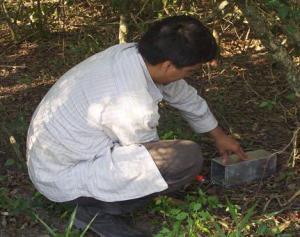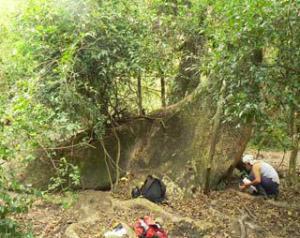Lucia Soler
This project aims to understand the ecological requirements of wild felids in relation to human presence and impact, as well as to start a conservation education program specific to small carnivores.

Knowledge about ecological requirements of small carnivores is scarce or null. Interviews with rural people showed the factors that promote conflict human - carnivore are poorly well-known. The most popular predators are foxes and small cats, and the rural residents kill them whenever they have the opportunity.

The study area is located in the North-Eastern of Corrientes Province and it belongs to Cuenca del Plata Wetlands where a mosaic of open and closed area co-exists. The predator’s guild is composed by Procyon cancrivorus (Procionide), Conepatus chinga, Galictis cuja, Lontra longicaudis (Mustelides), Cerdocyon thous, Lycalopex gymnocercus, Chrysocyon brachyurus (Canides), Leopardus geoffroyi, Puma yagouaroundi (Felides). The presence of Puma concolor was recently advertised by rural residents, but but it is listed like extinct for the province from 1950.
The goals of this project are:
(1) to verify the presence of Puma concolor in the study area,
(2) to determine the relative abundance of Leopardus geoffroyi, Puma yagouaroundi in areas with different human use,
(3) to establish the home range size, activity pattern, habitat use, habitat selection and thropic ecology
(4) to develop an conservation education program that involves felid-human conflicts.
Camera traps and radiotelemetry will allow us to establish the habitat use, activity time and movement patterns of the small felids. As well as, signs and marks like faeces, tracks and other evidences of felids will be recorded. Each sample will be assigned to a GPS point, with a habitat description around the evidence. The faeces also will be used to study the thropic ecology. Small vertebrates will be sampled to identify the fauna like potential diet component of carnivores. They will be captured using small box traps and pit fall traps.
The whole proposal will contribute with information on human behaviour, ecology, biology, and health status of wild felids. Involving the rural residents in field activities and in the monitoring of radio-collared individuals the project would establish a more considered approach to human-carnivore interactions. In the proposal will be working Franco Cáceres, Andrea Sisa y Soledad Rosso.